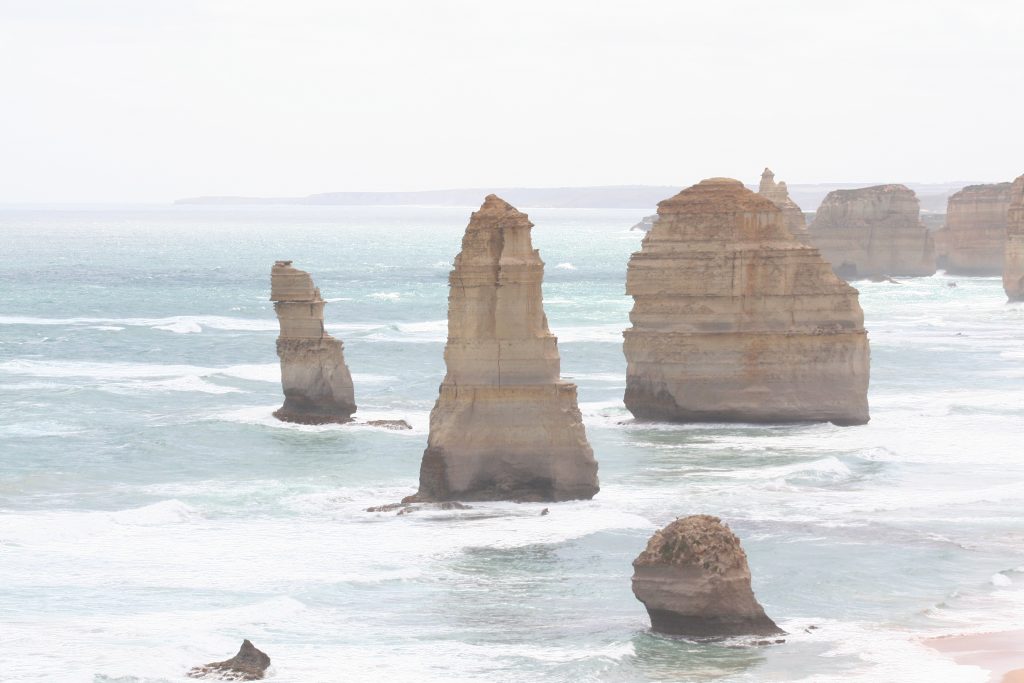Overview
Most Victorians have visited the coast in the past year. Walking/hiking remains the most common activity on the coast. Interactions with the coast are overwhelmingly positive – a coast or marine environment free of rubbish is the main contributor to Victorians’ enjoyment of these environments. Victorians place a high value on local coast and marine environments and natural features are the most highly valued aspects of the Victorian coast.
Victoria’s marine and coastal environments (which include our coastline, bays, and coastal lakes) are home to more than 12,000 plant and animal species, many not found anywhere else in the world. But these environments are facing many threats, including population growth and urbanisation, commercial and recreational fishing, invasive species and droughts and floods.
The Corangamite coastal environment is naturally dynamic and is constantly changing and evolving. It changes through the influence of wind, tides, waves and weather systems. Within reason, we must plan for and adapt to natural changes. This diversity and change reflect the dynamic, complex and interconnected nature of coastal and marine habitats.
While there are management practices in place, the coasts and estuaries of the region face significant challenges associated with the threats posed by climate change as well as population, land use and developmental pressures on the natural values of these assets.
The Marine and Coastal Act 2018 along with the Marine and Coastal Policy provide the overarching statutory and policy frameworks for the management of the region’s marine and coastal environments. The Marine and Coastal Strategy currently being developed will identify key actions and responsibilities for the delivery of the Marine and Coastal Policy.
Assessment of current condition and trends
Coastal habitats are dominated by a variety of vegetation classes, including Coastal Dune Scrub, Coastal Headland Scrub, Coastal Tussock Grassland, and Coastal Saltmarsh Ecological Vegetation Classes.
The health and function of coastal ecosystems and associated habitats are being threatened by human uses and developments across the Corangamite region. Population growth and urbanisation are reducing and fragmenting surviving habitats, especially around larger centres such as Geelong and along the Bellarine and Surf Coast. While impacts on waterways and soils are disrupting ecosystem processes, invasive species and increasing extraction of natural resources are changing ecosystem species composition. Population growth in coastal areas is variable across the region with the major impacts of population growth and use being to the east of Cape Otway. The Coastal Demographics in Victoria report provides a state-wide overview of this issue.
The diversity of natural values of the regional coastal area is high. Both terrestrial and marine environments encompass a variety of interacting plants and animals that constitute and drive the natural ecosystems. A diversity of vegetation types, including forest, woodland, heathland and coastal dune communities are all found on the regional coastline, with corresponding high habitat diversity.
The Corangamite coastline constitutes four bioregions, dominated mainly by Otway Plain and Otway Range; with the latter maintaining a majority of its original vegetation cover (81.6%). Within the Corangamite region, the Otway Range and Otway Plain bioregions have the highest percentages of remnant vegetation within public land (79.1% and 61.9% respectively). Most of the remnant Corangamite Coastal Biodiversity in the region is reserved in national, state and other parks, state forests, and other public land reserves, including the Great Otway National Park and the Angahook-Lorne State Park.
Many species and ecosystems have evolved and adapted to specific fire regimes and rely on fire to regenerate and maintain health. Fire is continuously resetting and regenerating the mix of species and habitat structures, contributing to habitat diversity across the coastal landscape.
Priority Ecological Vegetation Classes (EVCs) include Coastal Dune Scrub/Coastal Dune Grassland Mosaic, Coastal Saltmarsh, Coastal Dune Scrub, Coastal Headland Scrub, Coastal Headland Scrub/Coastal Tussock Grassland Mosaic, Coastal Tussock Grassland and Coastal Alkaline Scrub.

Major threats and drivers of change
A 2012 poll for the Victorian Coastal Council showed that the top four marine and coastal issues for Victorians were overfishing/illegal fishing, pollution, development and storm water pollution. Compared to earlier polls, fewer respondents believed the coast was well-managed and two thirds felt that the sea level was rising due to climate change, causing erosion and flooding. How Victorians perceive the coast has been further assessed in Wave 5 Community Attitudes and Behaviour Report.
Coastal and catchment development over the past two centuries has led to significant losses of coastal ecological vegetation classes (EVCs), with some now endangered, vulnerable or depleted. Coastal Alkaline Scrub has been reduced to 22% of its original cover on the Victorian Volcanic Plain and 31% on the Otway Plain bioregions. The Otway Plain has just 26% of its pre-1750s cover of coastal saltmarsh.
Coastal environments are highly valued by the community in terms of the biological diversity they contain and/or support. A large proportion of the coastal environment within the Corangamite region is held in public ownership, but under varied management arrangements. The health of coastal biodiversity is subjected to a range of threatening processes.
Managing and protecting Corangamite’s coastal environments in the best natural state has challenges, including:
- Hazards and risks associated with a changing climate and sea level rise
- Potential ecosystem changes from increased ocean temperatures, changes to ocean chemistry, and ocean acidification
- Vegetation clearing
- Soil erosion, landslides
- Acid sulfate soils
- Pest plants and animals
- Increasing population pressures and use
- Litter
- Damage from pets and livestock
- Growing cost of providing and maintaining coastal infrastructure
- Wastes and pollutants.




